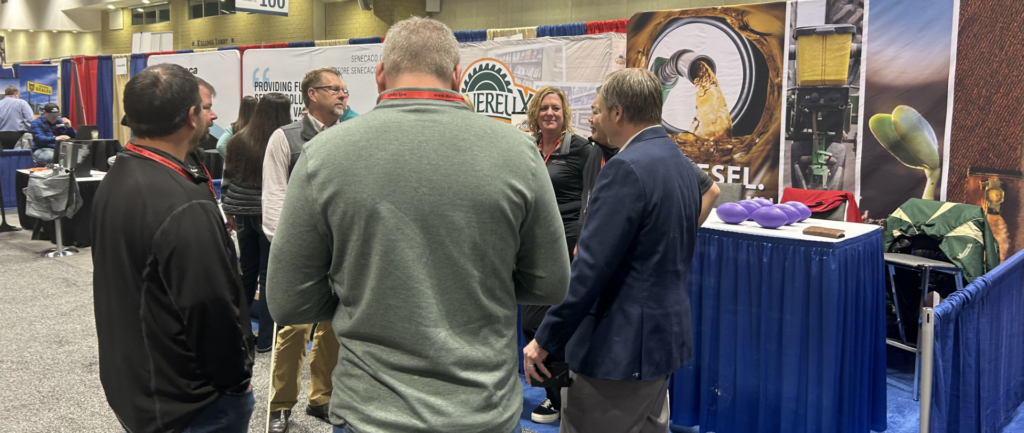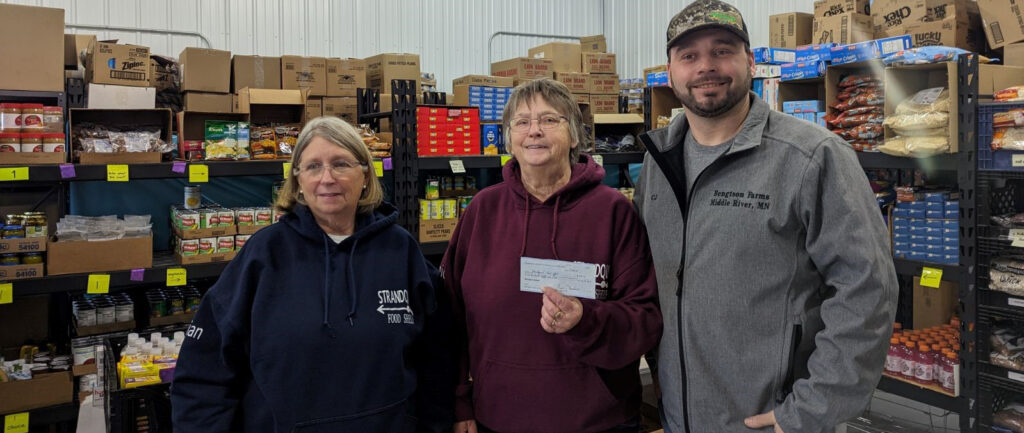Paul Simonsen always has been interested in the environment and how his farming operation affects it. But he’s not confident in all of the models and data state officials have concerning the amount of nutrients and chemicals that leave farmland and end up in waterways.
The farm he and his wife, Janet, own is in southeastern Renville County, a highly productive ag area where corn, sugar beats, soybeans, sweet corn and peas flourish.
Since 2011, an array of precise, real-time data have been captured on the farm, measuring and testing the water that flows from his crop land, down through the underground drainage tile system and into an open ditch that eventually flows into the Minnesota River.
He’s part of Discovery Farms of Minnesota, a program operated by the Minnesota Agricultural Water Resource Center, the Minnesota Department of Ag and the University of Minnesota. Funding comes from federal and state sources and from the state corn and soybean growers’ associations.
“What they’re doing is something I was interested in — monitoring the water coming out of a certain area and going into a ditch system. If there were areas we could improve conservation practices, I’m interested.”
Simonsen, whose long practiced certain conservation techniques, including installing buffer strips, has found the data are showing he is doing pretty well in keeping nutrients out of the water.
He sees the Discovery Farms as a good way to get real-life, long-term scientific data that can be used to make decisions and guide public policy. He thinks some of the assumptions and predictive models developed by groups such as the Minnesota Pollution Control Agency don’t always square with what’s really happening on the land.
Warren Formo, head of the Minnesota Agriculture Water Resource Center, said they helped create the program in Minnesota in 2010 to gain accurate data on real farm conditions.
“We copied a program existing in Wisconsin. Now we do some things in conjunction with them,” he said.
“We look at best practices. People like to learn from their peers and they like to go out and see demonstrations and kick the tires before they try it themselves. We can sort through water and nutrient data and see if there’s a connection and where different practices can be used. It’s a water data tool but also a learning tool,” Formo said.
Urban-rural divide.
Simonsen thinks urban residents often are unaware of how the food they buy is produced and are unfamiliar with modern farming practices.
“There’s a disconnect. The people in the city don’t have any financial interest in (farming). There’s the insinuation that farmers aren’t trying to do the best thing,” he said.
“There’s always 1 or 2 percent of bad apples in any group and that’s the way with farmers. But the people I talk to, they’re trying to do the best they can. You’re still trying to make a profit, but you’re trying to do what’s best for the land.”
He said sometimes there is a backlash from farmers who can feel they are being blamed and face more regulations. “Nobody likes to be told what to do.”
Simonsen said the initial announcement of and recent rollout of a new buffer law pushed by Gov. Mark Dayton could have been handled better.
“The buffer thing would have been better if the governor had talked to farm groups ahead of time instead of just dropping the idea at the Pheasants Forever event.”
While he expects urban rural conflicts to continue, he’s philosophical about it.
“It’s good I guess because it makes you look at your own operation. Sometimes it’s how it comes across. You could be a little tactful instead of how some of these groups are just saying, ‘You have to do this,’ without science backing it up.
“As farmers we rely a lot on data, testing and things. Sometimes the arguments seem more emotional than science based.”
Constant data
Scott Matteson, monitoring hydrologist with the state Department of Agriculture, is involved in monitoring the dozen Discovery Farms around the state.
A large metal box, filled with an assortment of testing equipment and powered by a solar panel, is installed at the farms and collects information about water flowing off the surface and through underground tile lines.
“We look at the timing of when sediment and chemicals are leaving the field. We look at what’s applied for fertilizer and the management of it,” Matteson said.
“We don’t tell farmers what to do. We want them to farm as they farm. After three or four years, we look at their data and look at improvements they could make. It might be timing of nutrient application, tillage, different things.”
He’s also helping to monitor the effectiveness of different systems for cleaning sediment and nutrients from water coming off fields.
One is a large bioreactor north of Blue Earth. The system involves digging a large hole in an area just before where the field tile empties into a ditch. The hole is filled with wood chips. Water coming through the tile flows into the wood chips and then out the other side into another tile line before going into the ditch.
The system, he said, is effective at removing certain contaminants, nitrates in particular. “Usually you see these on smaller fields, but this one is unique in that it’s on over 550 acres of land and has three different beds of wood chips and all water goes through them.”
Longtime conservation
Simonsen is no stranger to trying new things on his farm. Fifteen years ago he put a 90-foot buffer along both sides of his drainage ditch. “I saw it coming and wanted to do something. I didn’t need to do 90 feet, I think if everyone had 16 feet would be good. I’m a pheasant hunter too, and there’s pheasant and deer in there.”
With the testing equipment installed in one of his fields, he now gets precise readings on what’s in the water coming off his land.
“My nutrient flow is in the very acceptable range. I watch how I apply the fertilizer. I only apply the recommended amounts, and most farmers do that because they don’t want to waste money on extra fertilizer they don’t need.”
He also rotates between soybeans and corn on each field, which means he can use less fertilizer than farmers who grown corn on the same land every year.
Simonsen said those collecting his data had assumed they’d find he had higher levels of sediment and nutrients because he uses open tile inlets in some places. On many farms water simply percolates down into the soil and then into the underground plastic tile lines, which have a series of small holes in them. But in fields with a large low spot, water flows off the surface to the low spot and can pool up and drown crops.
In those low areas, Simonsen and other farmers often run a tile line straight up from the underground line to get the pooled water into the tile system more quickly. Those tile inlets are open, meaning water quickly flows in without being filtered.
“With my open tile I think they were expecting higher levels of nitrogen but it was low. We had 5 inches of rain a few years ago and the water sat there, and then there was a fair amount of sediment going into the ditch — but not as much as they thought it would be.”
Simonsen said a neighbor of his tried a system in which the tile inlet is located just under the field and the area on top of the open inlet is filled with rocks. The idea was that the water would go through those rocks fairly quickly but would provide some filtration of sediment.
“Then we got 4 or 5 inches of rain and his field flooded, and it went over the township road and flooded my side. He put a couple of surface ones back in so it wouldn’t flood the road,” he said.
This summer Simonsen tried some new styles of covers that go over open inlets. They attach to the open tile and stand about 3 feet above the ground, with smaller holes in them to take in water more slowly and provide some filtering.
“People are looking at alternatives,” he said. “We want to do what’s best but we have to have effective drainage, too. We look for the best way to accomplish it.”







